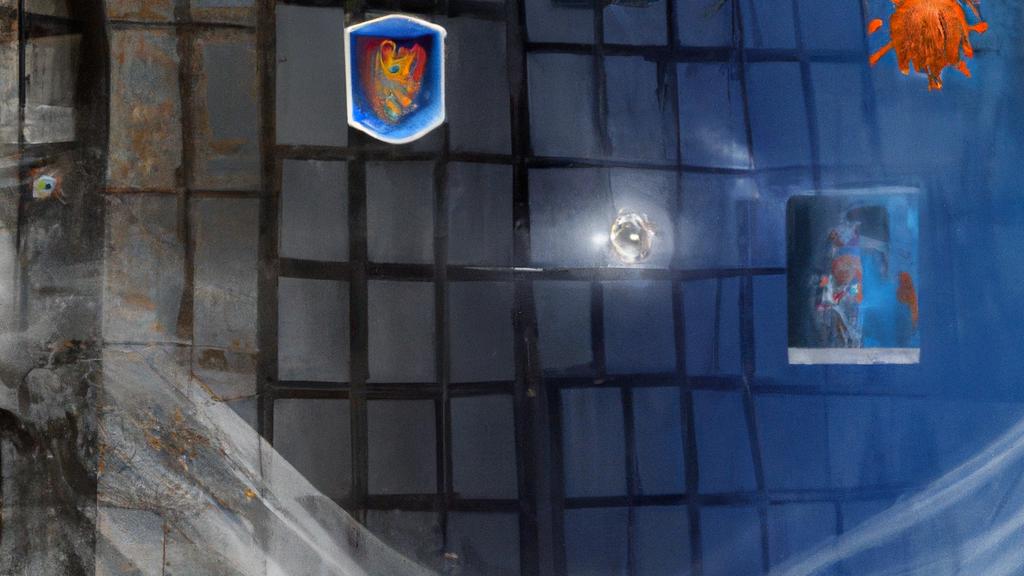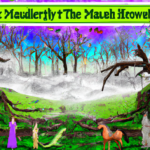
Introduction
Welcome to this exciting exploration of the worldbuilding of Sarah J. Maas, a renowned author of fantasy and young adult novels. Maas is known for her captivating storytelling, richly developed characters, and intricate worlds that draw readers in and refuse to let them go. In this article, we’ll take a closer look at how Maas creates her fantastical universes and the various elements that make her worldbuilding so compelling. Whether you’re a lifelong fan of Maas’ works or simply interested in the art of worldbuilding itself, you won’t want to miss this incredible journey through her writing. So, without further ado, let’s begin!
Overview of Sarah J. Maas’ writing style and popular series
Sarah J. Maas is a well-known author with a vast array of popular series under her belt. Her impressive writing style and ability to skillfully weave intricate plotlines and multifaceted characters are evident throughout all of her works. In this section, we’ll take an overview of her most popular series, including “Throne of Glass”, “A Court of Thorns and Roses,” and her other standalone novels. Through her series, Maas has gained a dedicated following of fans that appreciate her unique voice, relatable characters, and the incredible worlds she creates. As we delve deeper into her universe, we’ll get to know this masterful author and gain a new appreciation for her creative contributions to the world of literature.
The importance of worldbuilding in Maas’ works
One thing that sets Sarah J. Maas’ writing apart is her unparalleled ability to craft worlds that are entirely believable, unique, and immersive. The intricate worlds she creates are replete with political systems, social norms, and unique magic systems that add depth and intrigue to her books. In this section, we’ll examine the importance of worldbuilding in Maas’ works. We’ll look at how her worldbuilding impacts the plot, setting, and characters and how it transforms readers’ experiences. Additionally, we’ll explore how the author uses worldbuilding to convey themes and develop the overarching message of her books. By the end of this section, you’ll have a solid understanding of how vital worldbuilding is in creating a fantasy world that feels as authentic as our own.
The geography and politics of Maas’ fantasy worlds
The geography and politics of Sarah J. Maas’ fantasy worlds play an integral role in the success of her books. Her worlds are rich with locations, cultures, and political systems that are unique to each series. In this section, we’ll take an in-depth look at the geography and politics of Maas’ fantasy universes. We’ll explore the intricacies of her settings, such as the glass castle in “Throne of Glass” and the Spring Court in “A Court of Thorns and Roses.” We’ll also look at the various factions and political systems present in her works and the implications of these systems on the story and characters. By understanding the geographical and political landscape of Maas’ fantasy worlds, readers can gain a better understanding of the characters’ motivations and the overall direction of the story.
Magic systems and supernatural creatures in Maas’ universe
Another element that is integral to Sarah J. Maas’ worldbuilding is the magic systems and supernatural creatures present in her fantastical universes. In this section, we’ll explore the various types of magic and supernatural beings present in Maas’ works. We’ll delve into the magical capabilities of characters, such as Aelin’s fire magic in “Throne of Glass” and Feyre’s ability to shape-shift in “A Court of Thorns and Roses.” We’ll also examine the inhabitants of Maas’ worlds, such as faeries, witches, and other supernatural creatures, that help to create her unique worlds. By looking at the magic systems and supernatural creatures in her works, we can understand how these elements affect the story and the characters’ development, and gain a deeper appreciation for Maas’ fantastic writing style.
The role of diverse cultures and identities in Maas’ writing
Sarah J. Maas is a writer who is known for her skillful portrayal of diverse cultures and identities in her novels. In this section, we’ll examine the role of diversity in her worldbuilding, and how Maas uses diverse representation to create more authentic and relatable worlds. We’ll look at her portrayal of characters from different races, cultures, and sexual orientations and how these characters play critical roles in the story. Additionally, we’ll explore how she uses these characters to contribute to the message of her works, promote inclusivity, and challenge social norms in her fictional universes. By the end of this section, readers will hopefully gain a better understanding of the importance of representation in literature and the incredible impact it can have on readers.
Conclusion: The impact of Maas’ worldbuilding on readers and the fantasy genre as a whole.
In conclusion, Sarah J. Maas’ worldbuilding is one of the key elements that sets her writing apart from others in the fantasy genre. She has created rich and immersive worlds that enthrall readers, filled with political systems, cultures, and magic that add depth and intrigue to her novels. In this article, we’ve explored the different aspects of Maas’ worldbuilding, including her popular series, the importance of worldbuilding, geography, politics, magic systems and supernatural creatures, and representation of diverse cultures and identities. Through her works, Maas has created a universe where readers can lose themselves entirely in the story and be transported to a world entirely different from their own. Her worlds are not just fantastical but utterly authentic, leaving everyone who reads her works feeling like they have truly been on an adventure. It’s no surprise that her works have received worldwide acclaim and are dearly loved by those who have read them. In short, Sarah J. Maas is a master of worldbuilding, and her contribution to the fantasy genre will undoubtedly inspire future generations of writers for years to come.







